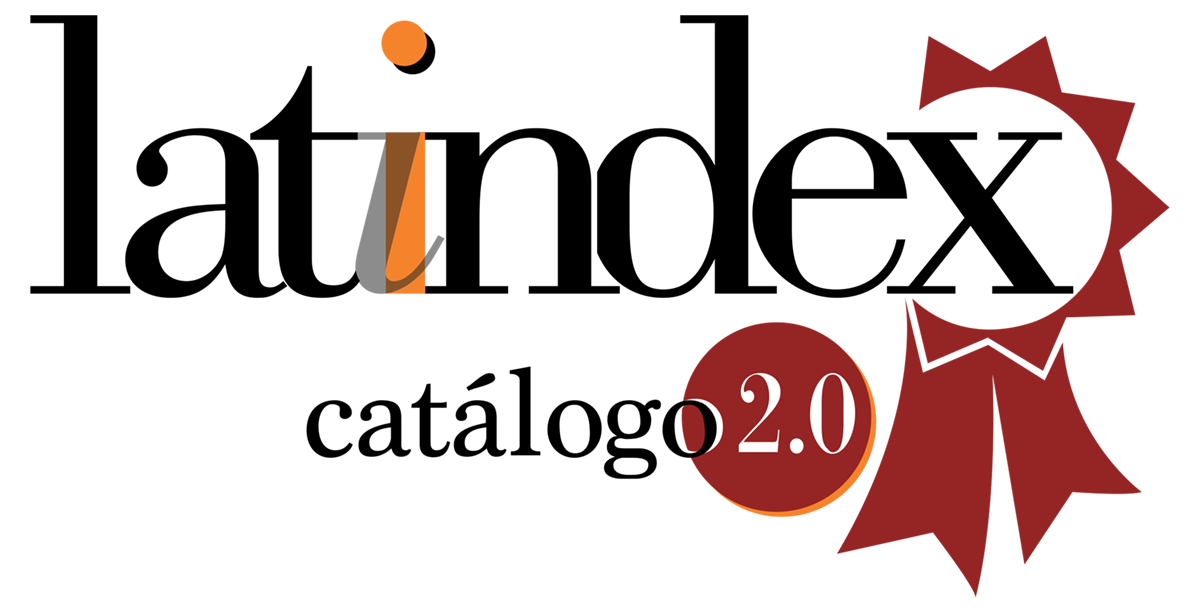Rol de los exosomas provenientes de células de cáncer colorrectal irradiadas, sobre células receptoras mediado por “bystander effect”
DOI:
https://doi.org/10.52611/confluencia.2024.1062Palabras clave:
Cáncer colorrectal, Bystander effect, Células HCT-116, Exosomas, IrradiaciónResumen
múltiples ventajas, presenta importantes efectos adversos. Uno de estos es el denominado Bystander effect, donde las células irradiadas transmiten señales a células no expuestas a radiación, las cuales modifican su funcionamiento, asociándose a la formación de nuevos tumores primarios en zonas alejadas del tumor inicial. Recientemente, se han propuesto a los exosomas como mediadores del fenómeno Bystander effect, sin embargo, su contribución aún no está del todo esclarecida. Objetivo: Evaluar el efecto de exosomas liberados por células de cáncer colorrectal en respuesta a una irradiación de 0,6 Gy, en células derivadas de tejido de colon normal. Metodología: Se emplearon técnicas de cultivo celular, ultracentrifugación para obtención de exosomas; cuantificación de muerte celular mediante azul de tipán; Rt-q-PCR para la expresión de transcritos antiapoptóticos. Resultado: Los exosomas provenientes de células cancerígenas inducen la muerte celular de forma progresiva en el tiempo y una tendencia a la baja de los transcritos antiapoptóticos BCL-2 y BCL-W. Conclusión: Se pudo observar que los exosomas liberados por células de cáncer colorrectal irradiadas, inducen la muerte de células de colon normales no sometidas a irradiación de forma progresiva en el tiempo y una tendencia a la baja de los transcritos antiapoptóticos BCL-2 y BCL-W, indicando una posible asociación con la vía apoptótica.
Descargas
Citas
Ministerio de Salud de Chile. Guía de Práctica Clínica - Problema de salud AUGE N° 70 Cáncer Colorectal en personas de 15 años y más 2018 [Internet]. Santiago: Subsecretaría de Salud Pública; 2019 [citado el 15 de noviembre 2023]. Disponible en: http://diprece.minsal.cl/le-informamos/auge/acceso-guias-clinicas/guias-clinicas-desarrolladas-utilizando-manual-metodologico/
Folkesson J, Birgisson H, Pahlman L, Cedermark B, Glimelius B, Gunnarsson U. Swedish Rectal Cancer Trial: Long Lasting Benefits From Radiotherapy on Survival and Local Recurrence Rate. J Clin Oncol [Internet]. 2005 [citado el 15 de noviembre 2023];23(24):5644-50. Disponible en: https://doi.org/10.1200/jco.2005.08.144
Birgisson H, Påhlman L, Gunnarsson U, Glimelius B. Adverse Effects of Preoperative Radiation Therapy for Rectal Cancer: Long-Term Follow-Up of the Swedish Rectal Cancer Trial. J Clin Oncol [Internet]. 2005 [citado el 15 de noviembre 2023];23(34):8697-705. Disponible en: https://doi.org/10.1200/jco.2005.02.9017
Burdak-Rothkamm S, Rothkamm K. Radiation-induced bystander and systemic effects serve as a unifying model system for genotoxic stress responses. Mutat Res [Internet]. 2018 [citado el 15 de noviembre 2023];778:13-22. Disponible en: https://doi.org/10.1016/j.mrrev.2018.08.001
Buonanno M, De Toledo SM, Howell RW, Azzam EI. Low-dose energetic protons induce adaptive and bystander effects that protect human cells against DNA damage caused by a subsequent exposure to energetic iron ions. J Radiat Res (Tokyo) [Internet]. 2015 [citado el 15 de noviembre 2023];56(3):502-8. Disponible en: https://doi.org/10.1093/jrr/rrv005
Wang X, Zhang J, Fu J, Wang J, Ye S, Liu W, et al. Role of ROS-mediated autophagy in radiation-induced bystander effect of hepatoma cells. Int J Radiat Biol [Internet]. 2015 [citado el 15 de noviembre 2023];91(5):452-8. Disponible en: https://doi.org/10.3109/09553002.2015.1012308
Zhang Y, Liu Y, Liu H, Tang WH. Exosomes: biogenesis, biologic function and clinical potential. Cell Biosci [Internet]. 2019 [citado el 15 de noviembre 2023];9(1):19. Disponible en: https://doi.org/10.1186/s13578-019-0282-2
Mothersill C, Rusin A, Fernandez-Palomo C, Seymour C. History of bystander effects research 1905-present; what is in a name? Int J Radiat Biol [Internet]. 2018 [citado el 15 de noviembre 2023];94(8):696-707. Disponible en: https://doi.org/10.1080/09553002.2017.1398436
American Cancer Society. Tratamiento del cáncer de colon según la etapa [Internet]. USA: ACS; 2023 [citado el 15 de noviembre 2023]. Disponible en: https://www.cancer.org/es/cancer/cancer-de-colon-o-recto/tratamiento/por-etapas-colon.html
Fernandez-Palomo C, Seymour C, Mothersill C. Inter-Relationship between Low-Dose Hyper-Radiosensitivity and Radiation-Induced Bystander Effects in the Human T98G Glioma and the Epithelial HaCaT Cell Line. Radiat Res [Internet]. 2016 [citado el 15 de noviembre 2023];185(2):124-33. Disponible en: https://doi.org/10.1667/rr14208.1
Cherubini R, De Nadal V, Gerardi S, Guryev D. Lack of hyper-radiosensitivity and induced radioresistance and of bystander effect in V79 cells after proton irradiation of different energies. Radiat Prot Dosimetry [Internet]. 2011 [citado el 15 de noviembre 2023];143(2-4):315-9. Disponible en: https://doi.org/10.1093/rpd/ncq406
Mohye El-Din AA, Abdelrazzak AB, Ahmed MT, El-missiry MA. Radiation induced bystander effects in the spleen of cranially-irradiated rats. Br J Radiol [Internet]. 2017 [citado el 15 de noviembre 2023];90(1080):20170278. Disponible en: https://doi.org/10.1259/bjr.20170278
Drozdovitch V, Minenko V, Golovanov I, Khrutchinsky A, Kukhta T, Kutsen S, et al. Thyroid Dose Estimates [Internet] for a Cohort of Belarusian Children Exposed to 131 I from the Chernobyl Accident: Assessment of Uncertainties. Radiat Res [Internet]. 2015 [citado el 15 de noviembre 2023];184(2):203-18. Disponible en: https://doi.org/10.1667/rr13791.1
Mladenov E, Li F, Zhang L, Klammer H, Iliakis G. Intercellular communication of DNA damage and oxidative status underpin bystander effects. Int J Radiat Biol [Internet]. 2018 [citado el 15 de noviembre 2023];94(8):719-26. Disponible en: https://doi.org/10.1080/09553002.2018.1434323
Buonanno M, de Toledo SM, Azzam EI. Increased Frequency of Spontaneous Neoplastic Transformation in Progeny of Bystander Cells from Cultures Exposed to Densely Ionizing Radiation. Santos J, editor. PLoS ONE [Internet]. 2011 [citado el 15 de noviembre 2023];6(6):e21540. Disponible en: https://doi.org/10.1371/journal.pone.0021540
Little JB, Nagasawa H, Li GC, Chen DJ. Involvement of the Nonhomologous End Joining DNA Repair Pathway in the Bystander Effect for Chromosomal Aberrations. Radiat Res [Internet]. 2003 [citado el 15 de noviembre 2023];159(2):262-7. Disponible en: https://doi.org/10.1667/0033-7587(2003)159[0262:iotnej]2.0.co;2
Watson GE, Lorimore SA, Macdonald DA, Wright EG. Chromosomal instability in unirradiated cells induced in vivo by a bystander effect of ionizing radiation. Cancer Res [Internet]. 2000 [citado el 15 de noviembre 2023];60(20):5608-11. Disponible en: https://pubmed.ncbi.nlm.nih.gov/11059747/
Wang R, Zhou T, Liu W, Zuo L. Molecular mechanism of bystander effects and related abscopal/cohort effects in cancer therapy. Oncotarget [Internet]. 2018 [citado el 15 de noviembre 2023];9(26):18637-47. Disponible en: https://doi.org/10.18632/oncotarget.24746
Nagasawa H, Little JB. Induction of sister chromatid exchanges by extremely low doses of alpha-particles. Cancer Res [Internet]. 1992 [citado el 15 de noviembre 2023];52(22):6394-6. Disponible en: https://pubmed.ncbi.nlm.nih.gov/1423287/
Balcer-Kubiczek EK, Eley JG. Secondary Malignancies in the Era of High-Precision Radiation Therapy. Crit Rev Oncog [Internet]. 2018 [citado el 15 de noviembre 2023];23(1-2):93-112. Disponible en: https://doi.org/10.1615/critrevoncog.2018025830
Andaur R, Tapia JC, Moreno J, Soto L, Armisen R, Marcelain K. Differential miRNA expression profiling reveals miR-205-3p to be a potential radiosensitizer for low- dose ionizing radiation in DLD-1 cells. Oncotarget [Internet]. 2018 [citado el 15 de noviembre 2023];9(41):26387-405. Disponible en: https://doi.org/10.18632%2Foncotarget.25405
LeBleu VS, Kalluri R. Exosomes as a Multicomponent Biomarker Platform in Cancer. Trends Cancer [Internet]. 2020 [citado el 15 de noviembre 2023];6(9):767-74. Disponible en: https://doi.org/10.1016/j.trecan.2020.03.007
Mansourabadi AH, Aghamajidi A, Faraji F, Taghizadeh S, Mohamed Khosroshahi L, Bahramkiya M, et al. Mesenchymal stem cells- derived exosomes inhibit the expression of Aquaporin-5 and EGFR in HCT-116 human colorectal carcinoma cell line. BMC Mol Cell Biol [Internet]. 2022 [citado el 15 de noviembre 2023];23(1):40. Disponible en: https://doi.org/10.1186%2Fs12860-022-00439-0
Wan C, Sun Y, Tian Y, Lu L, Dai X, Meng J, et al. Irradiated tumor cell–derived microparticles mediate tumor eradication via cell killing and immune reprogramming. Sci Adv [Internet]. 2020 [citado el 15 de noviembre 2023];6(13):eaay9789. Disponible en: https://doi.org/10.1126/sciadv.aay9789
Hu L, Yin X, Zhang Y, Pang A, Xie X, Yang S, et al. Radiation-induced bystander effects impair transplanted human hematopoietic stem cells via oxidative DNA damage. Blood [Internet]. 2021 [citado el 15 de noviembre 2023];137(24):3339-50. Disponible en: https://doi.org/10.1182/blood.2020007362
Bruckheimer EM, Cho SH, Sarkiss M, Herrmann J, McDonnell TJ. The Bcl-2 gene family and apoptosis. En: Al-Rubeai M, editors. Apoptosis [Internet]. Berlin: Springer Berlin Heidelberg; 1998 [citado el 15 de noviembre 2023]. p. 75-105. Disponible en: https://link.springer.com/10.1007/BFb0102306
Cui J, Placzek W. Post-Transcriptional Regulation of Anti-Apoptotic BCL2 Family Members. Int J Mol Sci [Internet]. 2018 [citado el 15 de noviembre 2023];19(1):308. Disponible en: https://doi.org/10.3390/ijms19010308
Shen L, Li J, Xu L, Ma J, Li H, Xiao X, et al. miR-497 induces apoptosis of breast cancer cells by targeting Bcl-w. Exp Ther Med [Internet]. 2011 [citado el 15 de noviembre 2023];3(3):475-80. Disponible en: https://doi.org/10.3892%2Fetm.2011.428
Descargas
Publicado
Cómo citar
Número
Sección
Licencia
Derechos de autor 2024 Revista Confluencia

Esta obra está bajo una licencia internacional Creative Commons Atribución-NoComercial-SinDerivadas 4.0.









